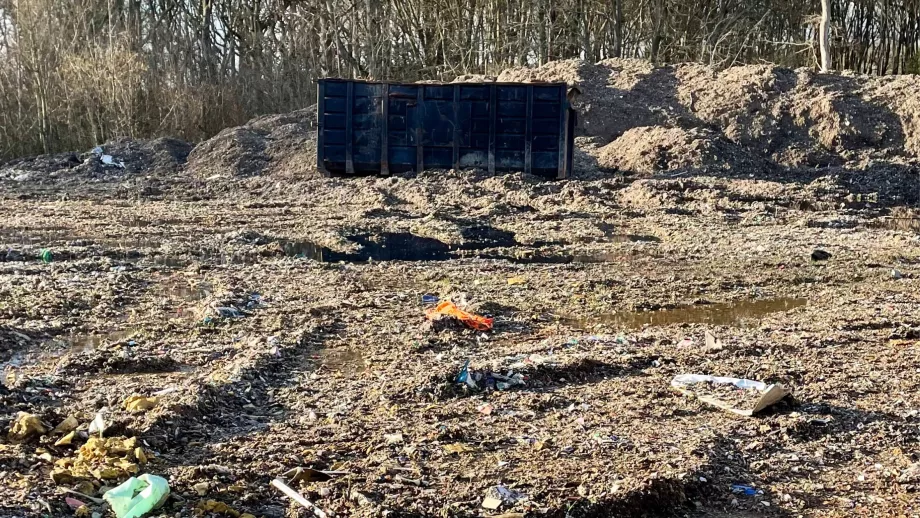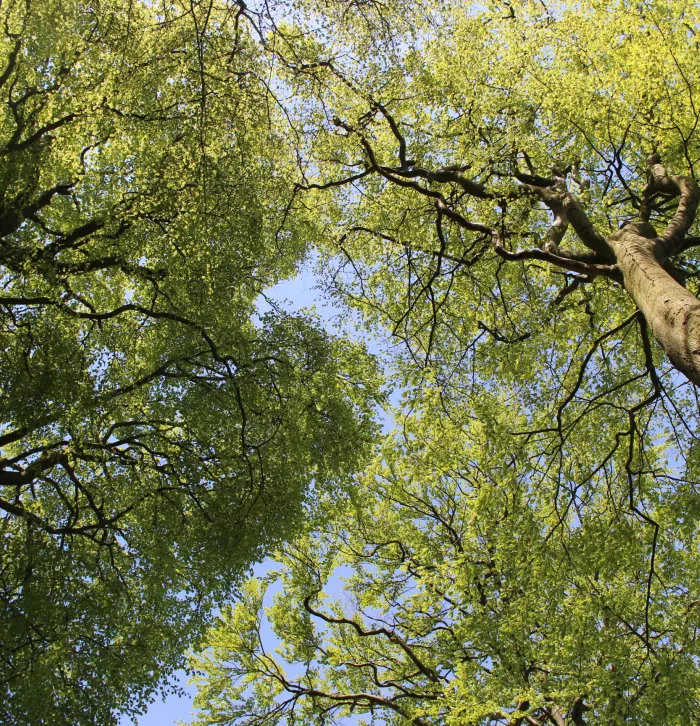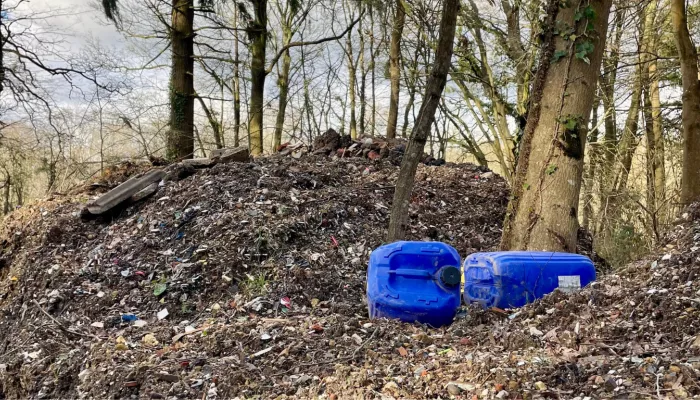Hoad's Wood, Bethersden

What’s happened?
What was a beautiful bluebell woodland and Site of Special Scientific Interest in Bethersden, Hoad's Wood supports an array of species with its ditch network and ancient trees. However, in recent years, what has happened at this tranquil precious habitat can only be described as an “environmental catastrophe.”
After several acres of the woodland were illegally felled, in July 2023 residents reported to the authorities that truckloads of industrial waste were being dumped on the nature haven. Like a hot potato these reports were passed around the authorities until January 2024, when the site was finally closed by the Environment Agency.
Sadly, for Hoad’s Wood, the damage has already been done and the woodland now lies beneath an estimated 35,000 tonnes of waste. This isn’t just fly-tipping, this is criminality on an organised crime scale.
What did we do?
After receiving contact from the Rescue Hoad’s Wood campaign group, we began working together to draw attention to the plight of the woodland, and asking those in power to clear the site and ensure a full investigation is conducted as to how it came to pass.
The campaign group are phenomenal, people giving up every minute of their spare time to hold public meetings, engage MPs and statutory bodies and remain an absolute driving force into bringing about positive change. They are a fantastic example of how to campaign in the right way and won the support in the House of Lords, from MPs and celebrities such as Chris Packham.
With our conservation charity colleagues, we wrote to the then Secretary of State Steve Barclay to ask for the clean-up to begin and an investigation to take place. The day before the General Election, we were delighted when he replied ordering the EA to begin organising the clean-up.
The EA must fund the cost of the clean-up through their own funds, possibly from flood defence work – is this robbing Peter to pay Paul. It must be better for this funding to have been found from emergency treasury funds.
What now?
The tender has gone out for contractors to clean the woodland, and we are told this may start in late October. Wildlife, biodiversity and community engagement forms part of this tender process so there is hope for this wonderful wild space in the future!
Oaken Wood, Aylesford
What’s happened?
In 2022, Kent County Council put out a call to find more sites that will supply hard rock in Kent.
The ‘Call for Sites’ involves operators, landowners, and relevant stakeholders nominating sites for the potential allocation in the Kent Mineral Sites Plan for hard rock quarrying to meet mineral supply requirements.
Following this, a draft Kent Mineral Sites Plan was prepared which sets out details of the one site nominated for the proposed extraction of hard rock - Land to the south and west of Hermitage Quarry in Aylesford.
The nominated site would involve the extension of Hermitage Quarry further into Oaken Wood and would likely result in the loss of over 50 hectares of irreplaceable ancient woodland.
The inclusion of Oaken Wood into these plans is the biggest single development threat to ancient woodland in England for decades. The loss of ancient woodland from this scheme could be greater than the losses from HS2 and the Lower Thames Crossing combined.
Furthermore, the extension of the quarry would also lead to the degradation of the Oaken Wood Local Wildlife Site. The designated area contains key habitats for rare and diverse animal and plant life.
What did we do?
We joined forces with like-minded charities to Save Oaken Woods, campaigning against the development of this precious woodland and also raised our concerns through the consultation process. Maidstone Borough Council has since stated they do not support the development plans, and we will continue to work with our conservation colleagues and stakeholders to save this ancient woodland from becoming a quarry.
Hunstead Woods, South Blean

What’s happened?
Winterbourne Fields is a proposed development of over 1,800 houses in Dunkirk, a small village in Faversham. It borders South Blean Nature Reserve, home to Hunstead Woods and a diverse array of wildlife. The heath fritillary butterfly and an array of other red-list species including the nightingale, honey buzzard, flycatcher, lesser spotted woodpecker, nightjar and tree pipit breed within the area. It also hosts notable species such as the spotted orchid, early-purple orchid, common twayblade, yellow wort, fairy flax, marsh violet, wood horsetail and English bluebell and the fiery clearwing moth which is an endangered species and one of the UK’s rarest invertebrates.
We are concerned that the recreational pressures from this development such as noise, light, cat predation and disturbance will further squeeze out wildlife in the area.
Currently, the Local Wildlife Site South Blean Nature Reserve, which recently went through a £1.3m bog restoration project, is relatively undisturbed by visitors and we are worried that the increased recreational pressures will degrade this habitat.
We are also concerned the development will impact our Wilder Blean Initiative which has the overarching goal of re-connecting the Blean landscape for wildlife; this development will have a detrimental impact on that vision.
What now?
We have consulted on the plans and are working with the campaign groups to challenge this development. We have carried out media interviews and will engage with the planning process to achieve the best outcome for nature.
The reality of life without woodlands is frightening. Without the work and collaboration with local campaign groups, our planning team and our passionate staff, these woodlands would likely be lost forever, under rubbish or concrete. The reality of life without woodlands is frightening. Without them, we would lose more than just trees – we lose wildlife, clean air, flood protection, carbon capture and the sense of peace they provide.
Our woodlands are under relentless pressure, but we’re committed to fighting for these vital habitats.


